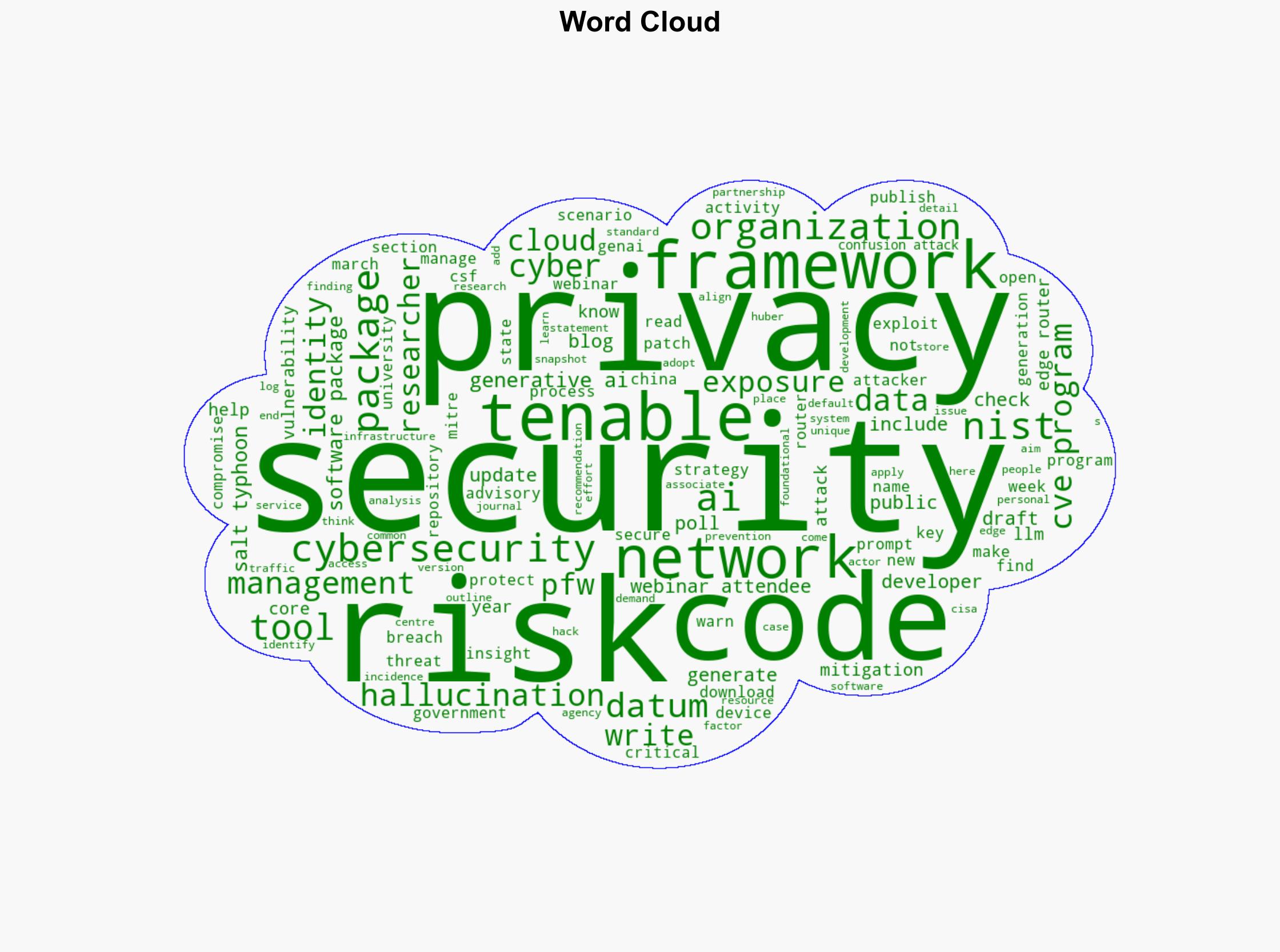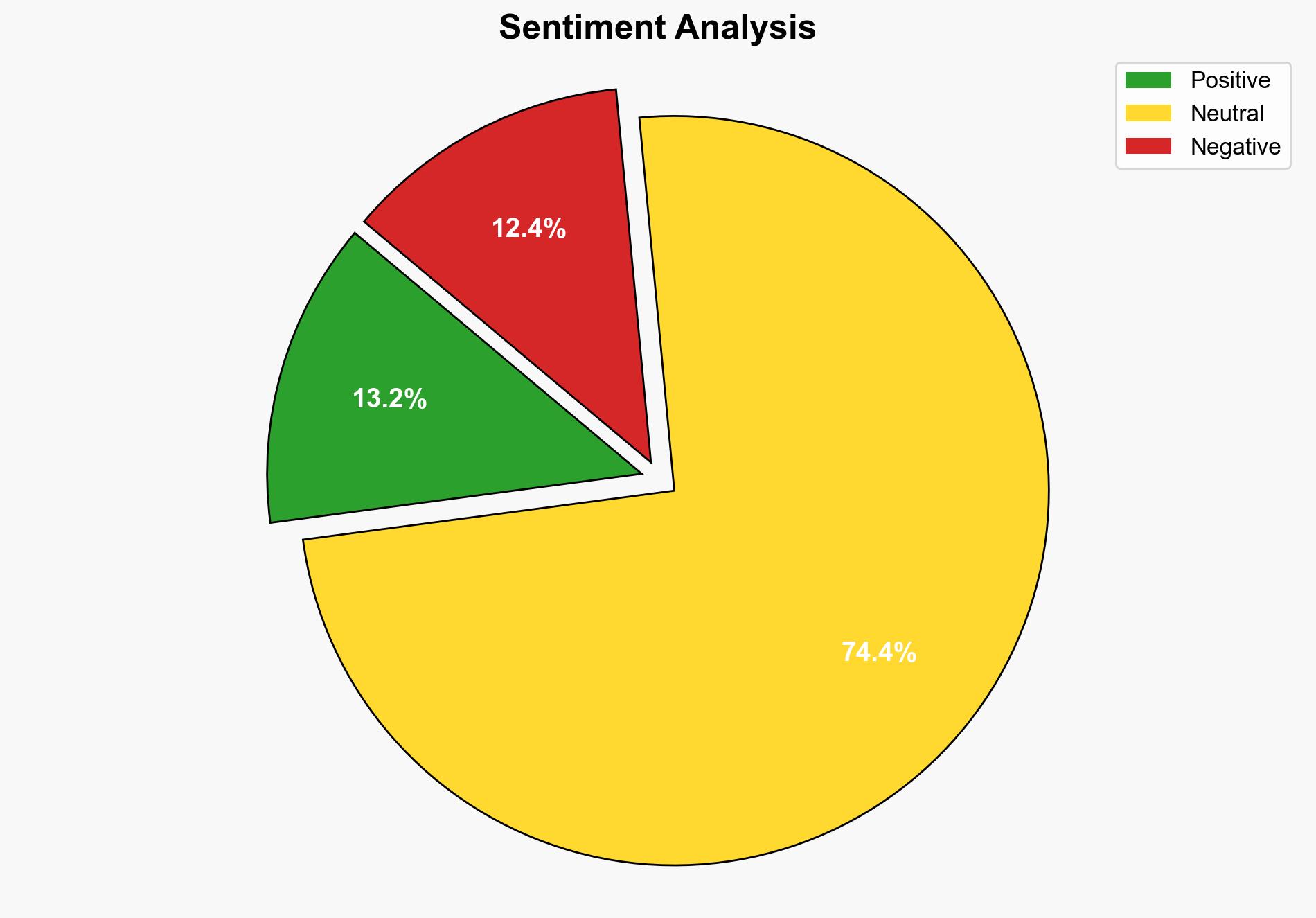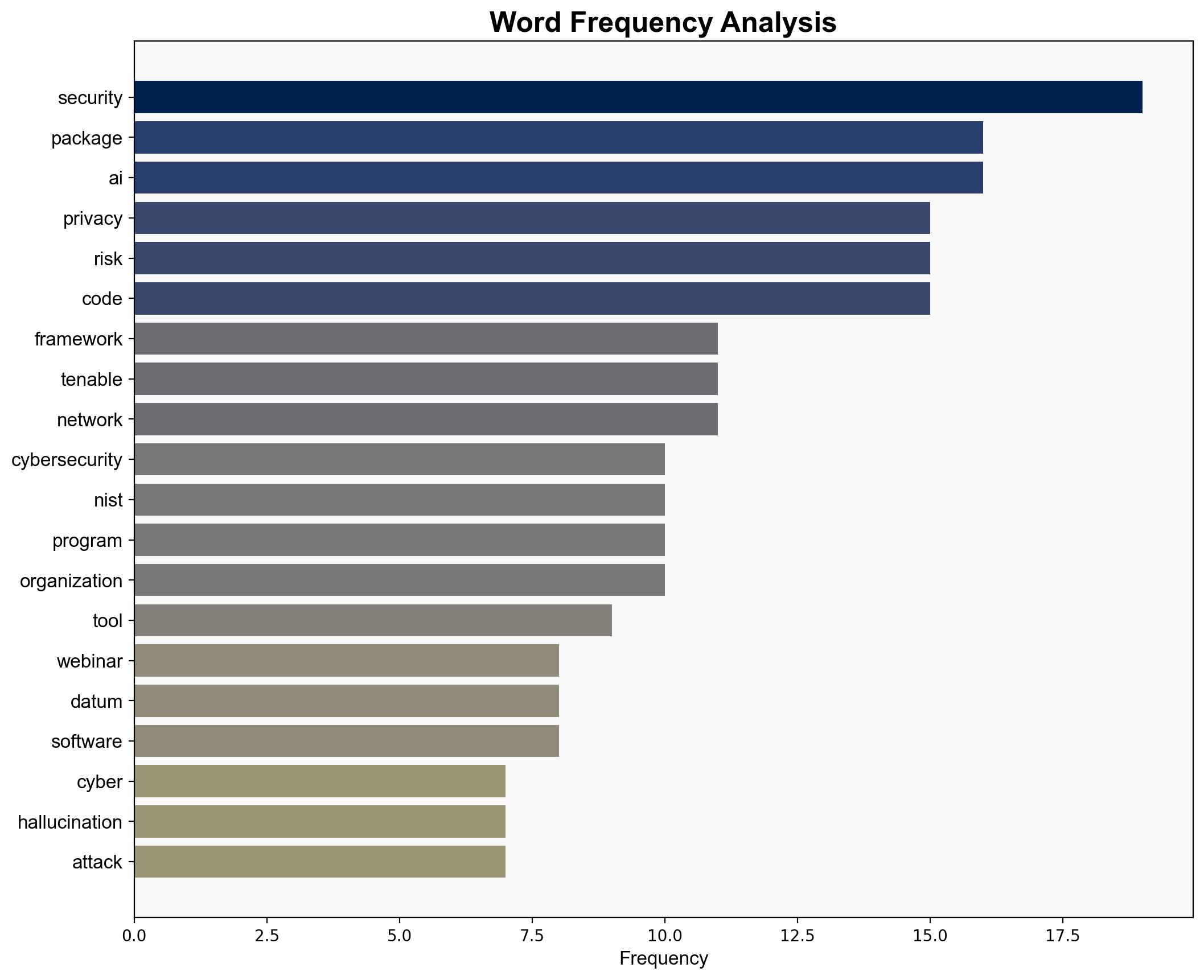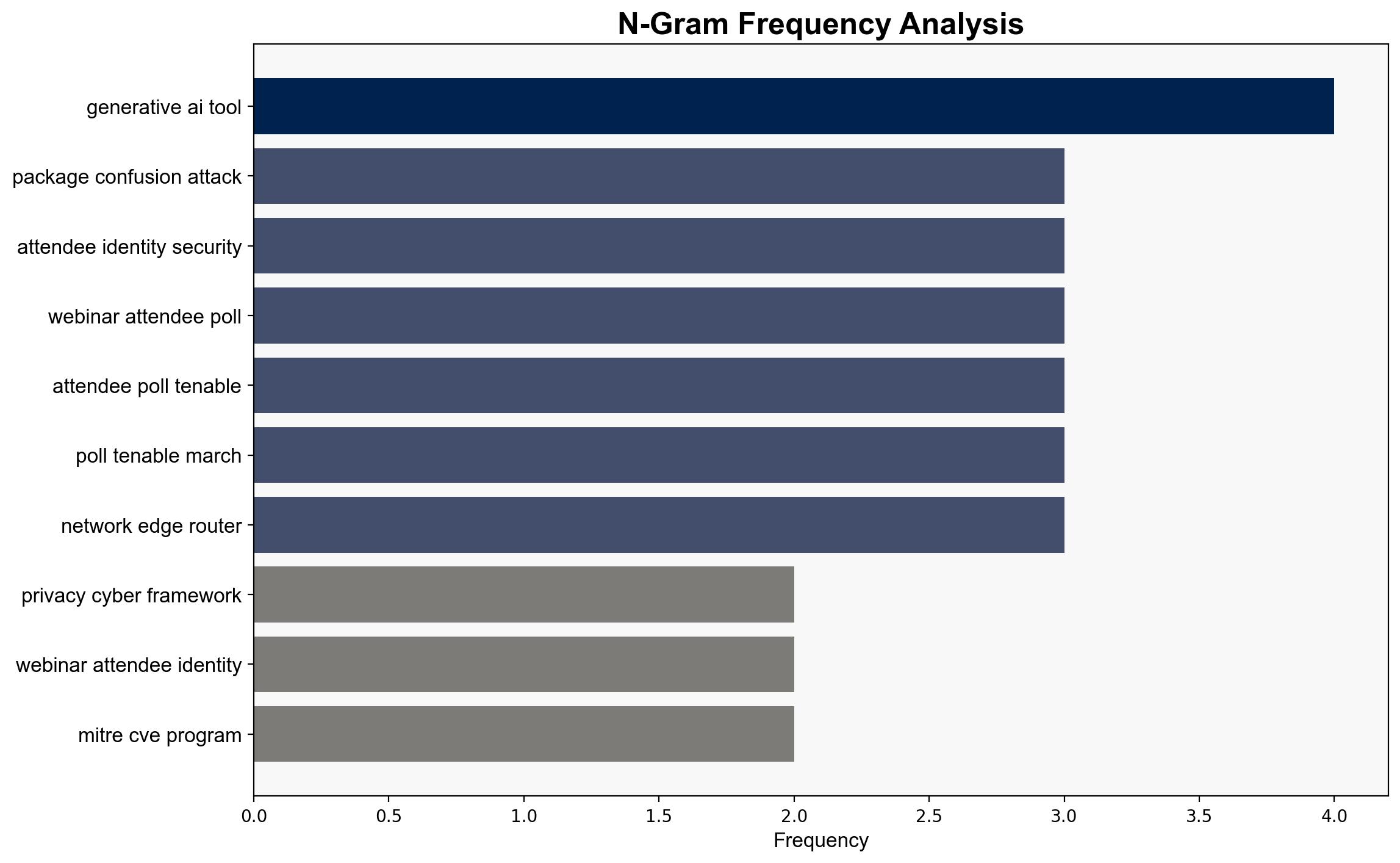Cybersecurity Snapshot NIST Aligns Its Privacy and Cyber Frameworks While Researchers Warn About Hallucination Risks from GenAI Code Generators – Tenable.com
Published on: 2025-04-18
Intelligence Report: Cybersecurity Snapshot NIST Aligns Its Privacy and Cyber Frameworks While Researchers Warn About Hallucination Risks from GenAI Code Generators – Tenable.com
1. BLUF (Bottom Line Up Front)
The U.S. National Institute of Standards and Technology (NIST) has released a draft update to its Privacy Framework, aligning it more closely with the Cybersecurity Framework to enhance data protection and cyberattack prevention. This update includes a new section on artificial intelligence (AI) risks. Concurrently, researchers highlight the potential risks of hallucination from generative AI (GenAI) code generators, which could lead to package-confusion attacks. Key recommendations include adopting the updated frameworks for integrated risk management and addressing AI-related privacy concerns.
2. Detailed Analysis
The following structured analytic techniques have been applied:
Analysis of Competing Hypotheses (ACH)
The alignment of NIST’s frameworks likely stems from the increasing overlap between privacy and cybersecurity risks, necessitating a unified approach. The hallucination risks from GenAI tools may arise from insufficient validation mechanisms in AI-generated code, leading to potential exploitation by attackers.
SWOT Analysis
Strengths: The integrated frameworks provide a comprehensive approach to managing privacy and cybersecurity risks.
Weaknesses: The complexity of implementing both frameworks simultaneously may pose challenges for organizations with limited resources.
Opportunities: Organizations can leverage these frameworks to enhance their risk management strategies and improve compliance with regulatory requirements.
Threats: The evolving nature of AI technologies and associated risks may outpace current framework updates, necessitating continuous adaptation.
Indicators Development
Warning signs of emerging cyber threats include increased reports of package-confusion attacks and vulnerabilities in AI-generated code. Monitoring developments in AI risk management and framework adoption rates will be crucial.
3. Implications and Strategic Risks
The alignment of NIST’s frameworks signifies a strategic shift towards integrated risk management, potentially influencing global cybersecurity standards. However, the rapid evolution of AI technologies poses ongoing risks, particularly in the context of software development and data privacy. Organizations must remain vigilant to adapt to these changes and mitigate associated threats.
4. Recommendations and Outlook
- Adopt the updated NIST frameworks to enhance integrated privacy and cybersecurity risk management.
- Implement robust validation mechanisms for AI-generated code to mitigate hallucination risks.
- Continuously monitor AI developments and update risk management strategies accordingly.
- Scenario-based projections suggest that organizations failing to integrate these frameworks may face increased regulatory scrutiny and cyber threats.
5. Key Individuals and Entities
Julie Chua




